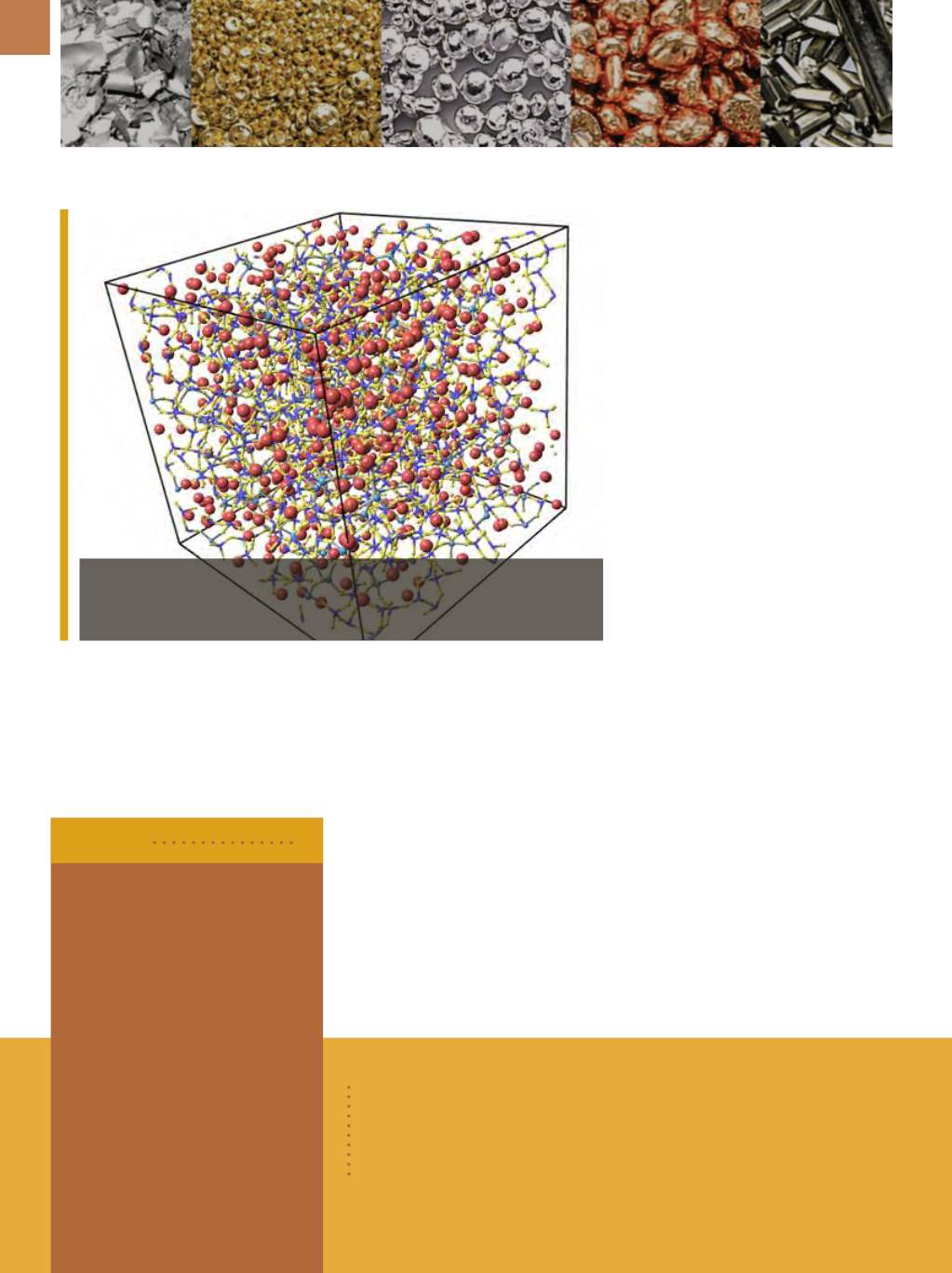

A D V A N C E D M A T E R I A L S & P R O C E S S E S | N O V E M B E R / D E C E M B E R 2 0 1 5
8
METALS | POLYMERS | CERAMICS
um, in the high-performance glass for-
mation process. Sodium and potassium
ions are typically added into the com-
position of glasses as their presence
lowers the temperature needed to form
glass, thereby saving energy. However,
this process and combination of ions
with different atomic sizes makes glass
susceptible to long-term deformations.
“The next step is to prescribe optimal
glass compositions that feature little, if
any, relaxation, in order to enable de-
sign of large yet stable screens,” says
Bauchy.
For more information: Mathieu
Bauchy, 310.825.9991,
bauchy@ucla.edu,
www.ucla.edu.
TEMPERATURE MAKES
PLASTIC MUSCLES WALK
Hydrogels are translucent, squishy
polymers that resemble tissues by hold-
ing large amounts of water within an
interlocked molecular network. A team
led by researchers at RIKEN, Japan, de-
veloped a way to cause these biocom-
patible materials to act like artificial
muscles that rapidly expand and con-
tract when heated and cooled. Yasuhiro
Ishida and colleagues designed a hy-
drogel whose properties differ consid-
erably from those of other hydrogels—
their thermoresponsive material can
lengthen in one direction and contract
in another without absorbing or releas-
ing water, allowing this muscle-like de-
vice to operate rapidly in an open-air
environment. The secret to this behav-
ior lies in tiny nanosheets embedded in
the hydrogel that harness electrostatic
Atomic structure of a simulated sodium aluminosilicate glass, representative of
Corning Gorilla Glass. Silicon, aluminum, sodium, and oxygen atoms are represent-
ed in blue, cyan, red, and yellow, respectively. Courtesy of Mengyi Wang/UCLA.
Royal DSM,
the Netherlands,
highlighted developments in
fiber visualization and low-profile
characteristics of its Dyneema
Purity fiber for use in the design of
medical devices at the 7th Interna-
tional UHMWPE Meeting in October
in Philadelphia. Medical-grade
UHMWPE fibers enable multiple su-
ture designs, assisting surgeons in
differentiating sutures when there
are multiple styles used during a
procedure.
dsm.com.
BRIEFS
Japanese auto supplier
Yorozu Corp.
will build a $100 million metal
stamping facility in Jasper, Ala., creating 300 jobs. The facility will provide
suspensions and other components to several auto assembly plants. Con-
struction is expected to start by January 2016, with operations beginning
in July 2017.
www.yorozu-corp.co.jp/en.GLASS FLOW DISCOVERY
ENABLES LARGER
SMART SCREENS
In complex, high-tech kinds of
glass, like Corning Gorilla Glass, suscep-
tibility to room-temperature deforma-
tions has been known to exist for years.
Now, researchers from the University of
California, Los Angeles discovered why
such flowing happens and how fast.
Using molecular dynamics simulations
of different glasses, researchers show
that high-performance glass can exhibit
some long-term deformations propor-
tional to how large the glass is.
“We found that this long-term
relaxation is due to the coexistence
of competitive chemical elements of
different sizes in the atomic network
of the glass, which is known as the
mixed-alkali effect,” says UCLA profes-
sor Mathieu Bauchy. The key is the use
of two alkali ions, sodium and potassi-


















